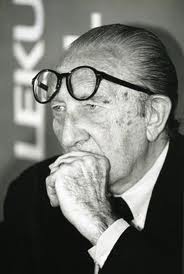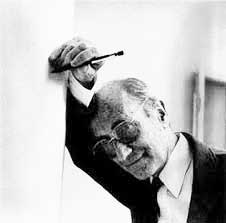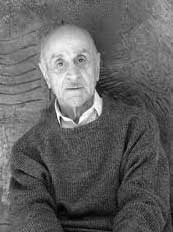Modern Architecture
Symbolically, the Spanish pavilion in the World's Fair of 1958, celebrated in Brussels, marked a step away from the monumental classicism which the regime had chosen to spread its ideology along the actual physical landscape of the country. In this sense, the construction, conceived by José Antonio Corrales and Ramón Vázquez Molezún, represented a conscious move from the government in the direction of the modernity embraced by the rest of Europe.
The pavilion, which was awarded the First Prize despite competing against the now-iconic 'Atomium' and Le Corbusier's ambitious French pavilion, was formed by a series of hexagons in the shape of inverted umbrellas held by simple columns, which, together, gave the whole the impression of forming a hive of sorts.
Francisco Sáez de Oiza

In Spain, at the time, there was little evidence of the regime's determination to move onto the path of modernity. Among the few examples that bear mentioning count Francisco Sáenz de Oiza's fairly adventurous sanctuary of Aranzazu, built between 1950 and 1954, which displays clean straight lines contrasted by the irregularity of the materials used, a combination of traditional unpolished stone and concrete.
Sáenz de Oiza would then design one of the most iconic buildings of the post-repression era of the dictatorship in the famous 'sky scraper', 'Torres Blancas', a 71-metre-high construction in the shape of 12 joined cylinders erected between 1961 and 1968. 'Torres Blancas' was the first attempt in Spain to develop the sort of organic architecture that would lead to vertical urbanism, with all kinds of amenities, from gardens to pools, found far above the ground.
Alejandro de la Sota

Another curious example of government-endorsed modernity in the late 1950s was the venue of the Civilian Government of Tarragona. This building, conceived by Alejandro de la Sota and erected in 1957, displayed eminently rationalistic characteristics and evidenced the need from the regime's part to embrace a less imposing, and perhaps more functional, aesthetic in its efforts to promote national unity and reconciliation.
De la Sota would also remain an influential presence in the architectural landscape of Spain for many years to come, developing a more industrial form of modernity, and integrating simplicity and functionality into designs that, if you have ever been to Spain you will have seen, no doubt. A good example of this can be found in his concept for the school, 'Colegio de las Maravillas' in Madrid, where clean straight lines are combined with large windows.
Miguel Fisac

One name often omitted from the important generation of architectural innovators in Spanish history is Miguel Fisac. Originally highly active on the religious front, Fisac proposed innovative designs for Catholic temples as early as 1952, when he built the complex of Arcas Reales, near Valladolid.
Fisac would later become extremely famous as his experiments with new materials led him to design one of the most audacious constructions erected in Madrid in the XX century. It was the so called 'Pagoda' building, home to the laboratories Jorba, and erected between 1965 and 1970. Resembling a Rubik's cube of six segments, each floor of the building made a 45 degree angle with the ones immediately above and below, making it seem from above like an eight-point star.
But as the biggest cities in Spain began to expand, new issues of habitability and essential urbanism had to be addressed by architects. It was well into the sixties when the art of building finally loosened its ideological content - from the grand imperialism of early Fascist expressions to the vindication of rationalism of the mid-fifties - developing the tendency that would dominate the end of the century: vertical urbanism.
Madrid
The first signs of this trend were clearly visible in the development of the Plaza España (Spanish Square), where the Edificio España was projected as early as 1947. Finished in 1953 the massive structure is still a landmark of the city. Julian Otamendi, the main architect in charge of the project, also completed the neighbouring Torre de Madrid, which is still today one of the tallest buildings of the country and which has a much more modern, less monumental feel to it.
For instance, in 1968 José Antonio Cordech developed the Trade buildings, an architectural complex of four skyscrapers where he combines curved lines with colossal structures that solve the issue of space by projecting usability upwards. Although these buildings in particular were conceived for commercial use, the concept of high-rise structures with commodities and amenities was taking root in Spain, as proved by the contemporary 'Torres Blancas' project discussed above.
